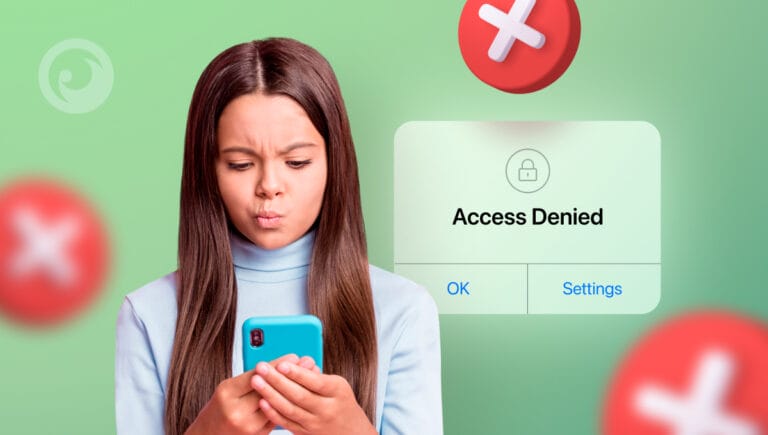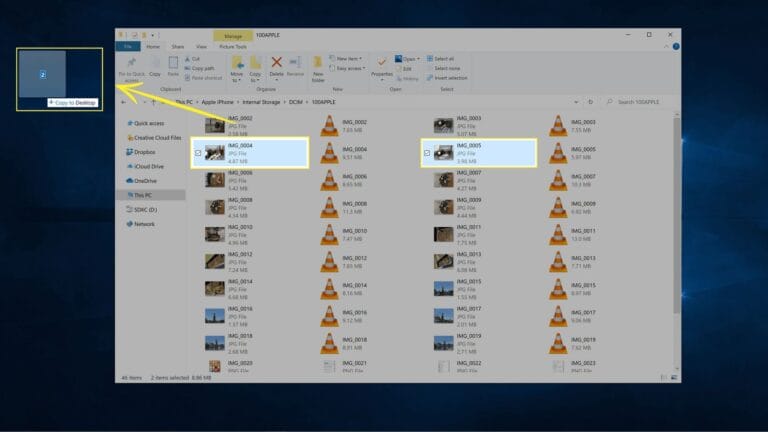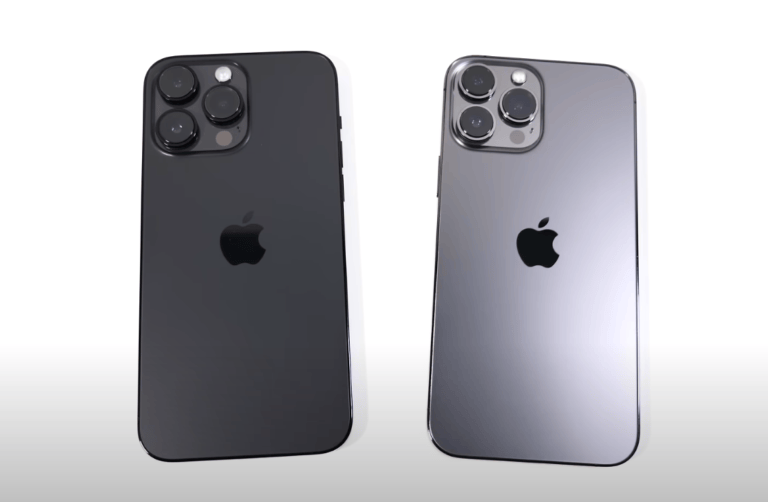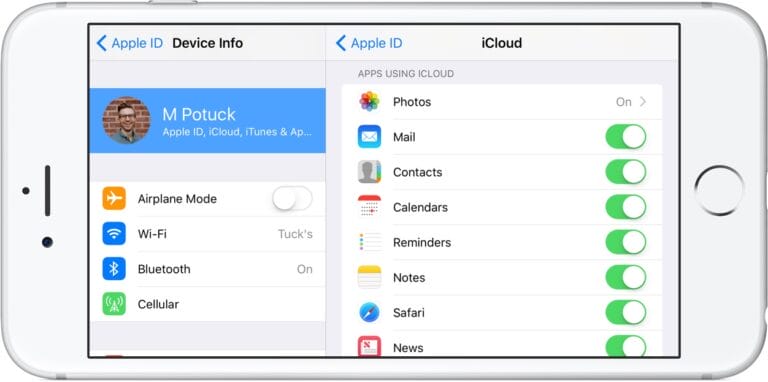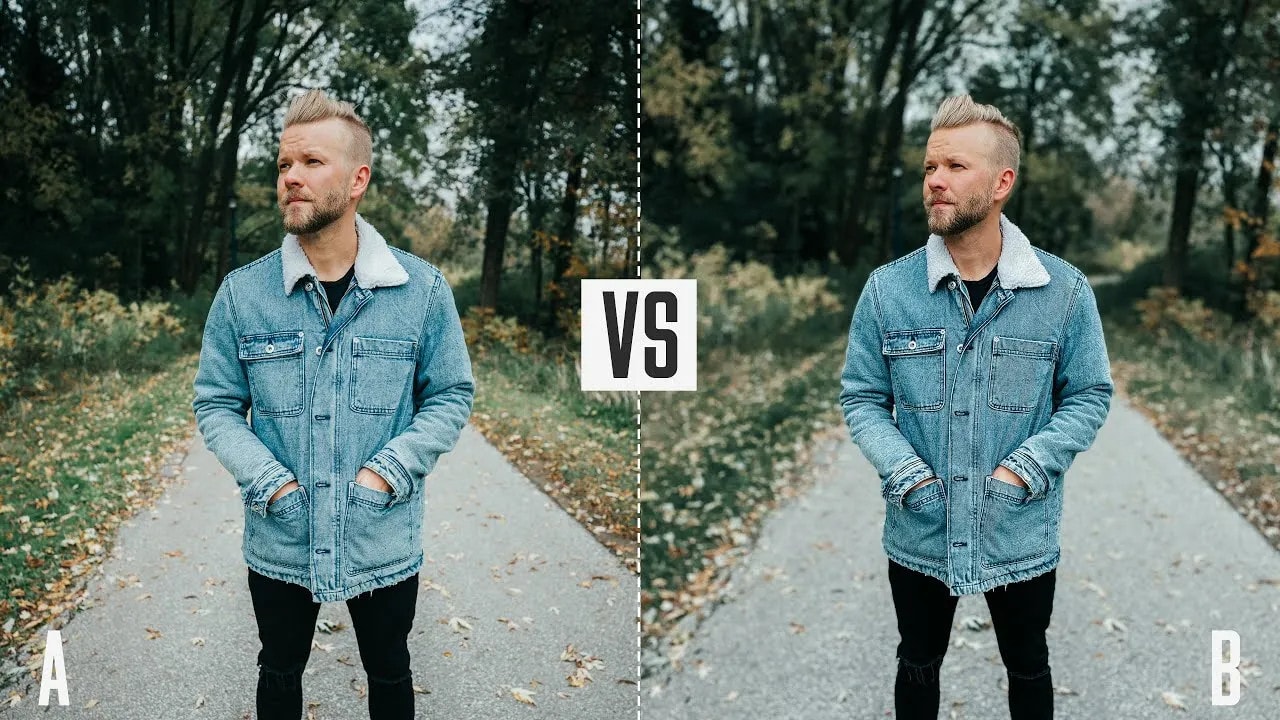
In the world of photography and capturing moments, two popular devices stand out: the iPhone and the DSLR. So, what’s the main difference between them in 2023? Let’s dive in and find out!
First things first, let’s talk about the iPhone. We all know that iPhones are more than just phones – they are powerful tools for capturing stunning photos. With the latest advancements in technology, iPhones have become a go-to choice for many photographers. But how do they compare to DSLRs?
On the other hand, DSLRs, or Digital Single-Lens Reflex cameras, have been around for a while and are known for their exceptional image quality and versatility. They offer a wide range of settings and lenses, allowing photographers to unleash their creativity. So, how do DSLRs stack up against the convenience and innovation of iPhones? Let’s explore the main differences between the two.
Join me as we embark on a journey to uncover the key distinctions between iPhones and DSLRs in 2023 and help you decide which one suits your photography needs best. Let’s get started!
Comparing iPhone and DSLR: Understanding the Key Differences in 2023
| Features | iPhone | DSLR |
|---|---|---|
| Portability | Highly portable and compact | Bulky and less portable |
| Image Quality | Great for everyday photography | Superior image quality, especially in low light |
| Zoom Capability | Digital zoom limitations | Optical zoom for better close-ups |
| Versatility | Offers various apps and features | Flexible lens options for different photography needs |
| Manual Control | Limited manual settings | Extensive manual controls for advanced users |
While iPhones excel in portability, versatility, and everyday photography, DSLRs provide superior image quality, zoom capabilities, and manual control options. Consider your needs and preferences before deciding which device suits you best.
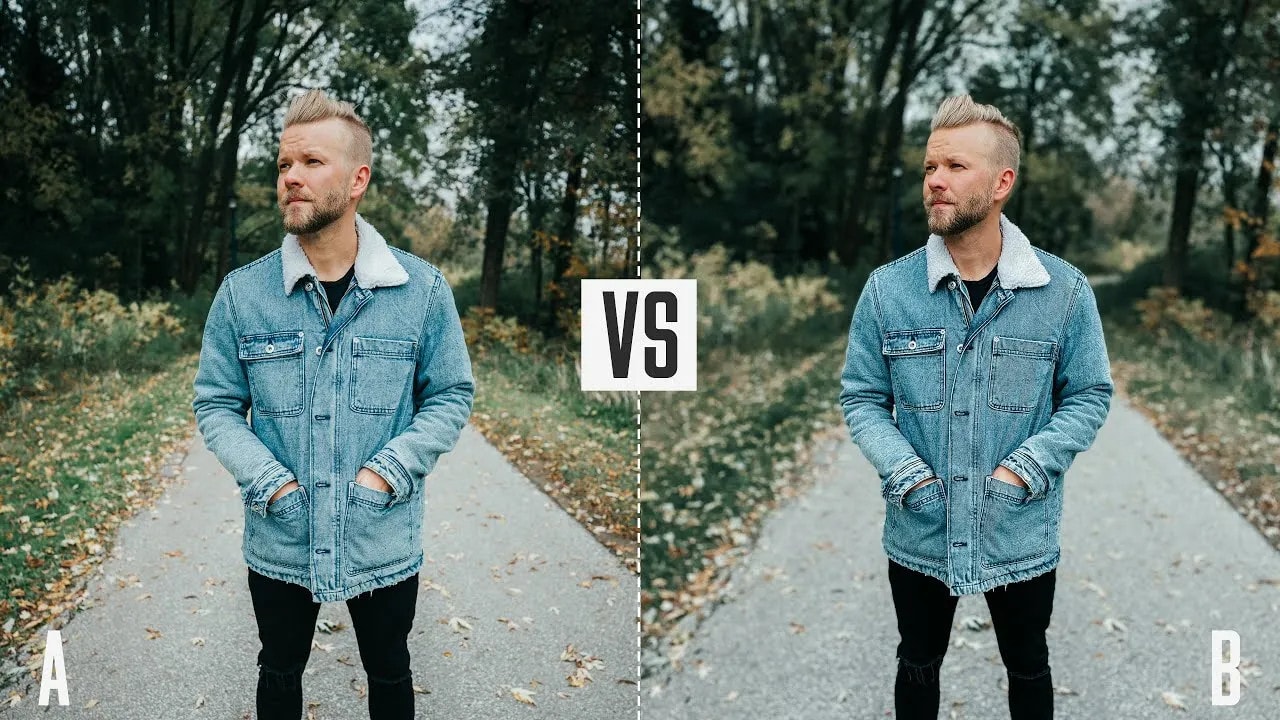
Iphone Vs Dslr: Get The Main Difference In 2023
Welcome to the ultimate comparison between two powerful devices: the iPhone and DSLR cameras! In this article, we will explore the key differences between these two popular gadgets and help you make an informed decision based on your needs and preferences. Whether you are a professional photographer or simply a tech enthusiast, understanding the distinctions between these devices is crucial in today’s fast-paced technological world. So, let’s dive in and explore the main differences between the iPhone and DSLR cameras in 2023!
1. Design and Portability
When it comes to design, the iPhone and DSLR cameras are fundamentally different. The iPhone, with its sleek and compact design, is specifically engineered for portability and convenience. It easily fits into your pocket or bag, making it an ideal choice for capturing spontaneous moments on the go. On the other hand, DSLR cameras are bulkier and heavier due to their advanced optical systems and interchangeable lenses. While DSLRs may not be as portable as the iPhone, they offer superior image quality and versatility.
Another notable difference lies in the user interface. The iPhone features a touch screen, allowing for intuitive and effortless navigation. DSLR cameras, on the other hand, have physical buttons and dials, providing a more tactile and manual shooting experience. The choice between these two options ultimately depends on your preference for portability and user interface.
For those seeking a balance between portability and image quality, mirrorless cameras have emerged as a viable alternative. These cameras combine the compactness of the iPhone with the interchangeable lens system and image quality of DSLRs. They offer the best of both worlds and are worth considering if you prioritize both portability and professional-grade photography.
2. Image Quality and Performance
One of the main differentiators between the iPhone and DSLR cameras is the image quality they produce. The iPhone has undoubtedly revolutionized smartphone photography with its advanced camera sensors and sophisticated image processing algorithms. The latest models boast high megapixel counts, improved low-light capabilities, and features such as Night Mode and Deep Fusion, resulting in stunning images in various conditions.
However, DSLR cameras have larger sensors, which allow for better light gathering, superior dynamic range, and greater control over depth of field. These cameras excel in capturing intricate details and producing professional-quality images. The ability to interchange lenses on DSLRs also opens up a world of creative possibilities, enabling photographers to adapt to different shooting scenarios.
In terms of performance, DSLR cameras typically have faster autofocus systems, quicker burst rates, and superior battery life compared to the iPhone. These features are essential for professionals or enthusiasts who need to capture fast-moving subjects or shoot for extended periods without recharging. While the iPhone has made impressive strides in performance, DSLRs remain the go-to choice for those who prioritize speed and reliability.
3. Versatility and Creative Control
When it comes to versatility and creative control, DSLR cameras have a clear advantage over the iPhone. DSLRs offer manual settings such as aperture, shutter speed, and ISO, allowing the photographer to have full control over the image’s exposure and depth of field. This level of control is essential for professional photographers who want to achieve a specific artistic vision.
Additionally, DSLRs are equipped with interchangeable lenses, enabling users to adapt to different subjects and shooting conditions. From wide-angle lenses for landscapes to telephoto lenses for wildlife photography, the options are limitless. This versatility provides photographers with greater flexibility and the ability to capture images that are simply not possible with the fixed lens of the iPhone.
On the other hand, the iPhone offers a variety of built-in shooting modes, filters, and editing capabilities that make it user-friendly and accessible to all. It simplifies the photography process, making it easy for users to capture and share impressive photos without the need for technical knowledge. For casual photographers or everyday users, the iPhone’s versatility and convenience make it an excellent choice.
4. Connectivity and Sharing
A significant advantage of the iPhone over DSLR cameras is its seamless connectivity and instant sharing capabilities. With the iPhone, you can instantly upload and share your photos and videos on social media platforms or with friends and family through messaging apps. Its built-in cellular connectivity and Wi-Fi capabilities ensure that you are always connected, making sharing and collaboration effortless.
DSLR cameras, while they may offer Wi-Fi or Bluetooth connectivity, often require additional adapters or accessories to establish a wireless connection. Sharing photos from a DSLR usually involves transferring them to a computer or mobile device before uploading or sending them. While this process may require more steps, it also provides an opportunity for photographers to curate and edit their images before sharing.
It’s worth noting that DSLR cameras excel in other connectivity aspects, such as the ability to connect to external monitors, flashes, and other professional-grade equipment. These features are essential for professional photographers who require a high level of control and precision in their work.
Artificial Intelligence Integration in the Future
In the future, it is expected that both the iPhone and DSLR cameras will continue to evolve and integrate artificial intelligence (AI) capabilities. The iPhone has already demonstrated significant advancements in computational photography, leveraging AI algorithms to enhance image quality and deliver features such as portrait mode and smart HDR.
On the other hand, DSLR camera manufacturers have incorporated AI technology to improve autofocus performance, subject tracking, and even intelligent scene recognition. These advancements aim to simplify the shooting process and assist photographers in achieving better results.
As AI continues to progress, we can expect more seamless integration between the iPhone and DSLR cameras, bridging the gap between convenience and professional-quality imagery. This integration will enable photographers and enthusiasts to leverage the power of AI to enhance their creativity and push the boundaries of visual storytelling.
Conclusion:
Ultimately, choosing between the iPhone and a DSLR camera depends on your individual needs and preferences. The iPhone offers portability, convenience, and remarkable image quality, making it the go-to choice for everyday photography and casual users. On the other hand, DSLR cameras provide exceptional image quality, versatile creative control, and superior performance, making them the preferred option for professionals and enthusiasts.
Consider factors such as your photography goals, shooting style, and budget when deciding between these two devices. Additionally, keep an eye on the latest advancements in technology and artificial intelligence, as these factors may further shape the landscape of smartphone and DSLR photography.
Ultimately, whether you choose the iPhone or a DSLR camera, remember that the quality of your photos relies on the skill and creativity of the person behind the lens. So, keep exploring, experimenting, and capturing the beauty of the world through whichever device you choose!
Key Takeaways: iPhone Vs DSLR – Get the Main Difference in 2023
- iPhones are convenient and compact, while DSLRs offer more manual control.
- DSLRs have larger sensors, resulting in higher image quality and better low-light performance.
- iPhones have advanced camera features, such as portrait mode and night mode.
- DSLRs have interchangeable lenses, allowing for a wider range of creative options.
- iPhones are great for everyday use and quick snapshots, while DSLRs excel in professional photography.
Frequently Asked Questions
Welcome to our FAQ section where we’ll explore the main differences between iPhones and DSLRs in 2023. Whether you’re a photography enthusiast or simply looking to upgrade your device, understanding the distinctions can help you make an informed decision. Read on to get your questions answered!
1. Can an iPhone camera match the quality of a DSLR?
While iPhones have made significant advancements in camera technology, DSLRs still offer superior image quality. DSLRs have larger sensors, which allow for greater light capture and produce more detailed and vibrant photos. They also have interchangeable lenses, which allow for greater control over depth of field and different shooting conditions. iPhones, on the other hand, are more convenient and compact, making them ideal for everyday photography and social media sharing.
So, if you’re a professional photographer or someone who values ultimate image quality and control, a DSLR is the way to go. However, if you prioritize convenience, portability, and don’t mind sacrificing a bit of image quality, an iPhone camera will serve you well.
2. Which device offers more versatility: iPhone or DSLR?
When it comes to versatility, iPhones have the upper hand. iPhones are not only smartphones but also multimedia devices that offer a wide array of features beyond photography. With an iPhone, you have access to various apps and editing tools, making it a versatile tool for both photography and other creative endeavors. Additionally, iPhones have the advantage of being lightweight, portable, and always readily available.
On the other hand, DSLRs are designed primarily for photography and provide a higher level of customization, allowing you to adjust settings like aperture, shutter speed, and ISO. They also offer a broader range of compatible lenses that allow you to achieve different perspectives and styles. So, if you’re looking for a device solely dedicated to photography with more advanced features, a DSLR is the way to go. If versatility and convenience are your priority, then an iPhone is the better choice.
3. Which device is better for low-light photography: iPhone or DSLR?
DSLRs are known for their exceptional low-light performance. With their larger sensors, DSLRs can capture more light, resulting in better image quality in challenging lighting conditions. DSLRs also offer manual controls, allowing you to adjust settings to optimize low-light shots by reducing noise and increasing exposure time.
While iPhones have made significant improvements in low-light photography, they still struggle to match the performance of DSLRs. iPhones utilize software algorithms to enhance low-light images, but due to their smaller sensors, they are limited in their ability to capture details and control noise. However, with features like Night mode and computational photography, iPhones can produce impressive results in moderate low-light situations.
4. Can iPhones replace DSLRs for professional photography?
While iPhones have come a long way in terms of camera capabilities, they still have some limitations in comparison to DSLRs for professional photography. DSLRs offer greater flexibility, control over settings, and interchangeable lenses, allowing professionals to capture a wider range of subjects and achieve more creative results.
That being said, with the right techniques and skill, it is possible to achieve professional-looking photos using an iPhone. Many professional photographers utilize iPhones as secondary cameras or in specific situations where the convenience and portability outweigh the need for advanced features. Ultimately, the choice between an iPhone and a DSLR for professional photography depends on the specific requirements and preferences of the photographer.
5. Which device is more user-friendly for beginners: iPhone or DSLR?
In terms of user-friendliness, iPhones are often considered easier to use for beginners. iPhones have intuitive interfaces, automatic shooting modes, and intelligent software that help capture great photos with minimal effort. They also offer instant access to editing tools and a seamless integration with social media platforms for easy sharing.
On the other hand, DSLRs have a steeper learning curve due to their manual controls and advanced settings. However, DSLRs provide a valuable learning experience for those interested in understanding the technical aspects of photography and honing their skills. With practice and some basic knowledge, beginners can master DSLRs and unlock their full potential.
Summary
So, to sum it all up, iPhones and DSLRs are different devices used for different purposes. iPhones are great for convenience, communication, and capturing everyday moments with decent photo quality. On the other hand, DSLRs offer superior image quality, manual controls, and interchangeable lenses, making them ideal for professional photography and creative pursuits.
While iPhones have come a long way in terms of camera capabilities, they still can’t quite match the image quality and versatility of a dedicated DSLR. However, for most people, the convenience and overall functionality of an iPhone make it the go-to choice for everyday photography needs. Ultimately, the choice between an iPhone and a DSLR comes down to your specific needs, preferences, and budget.

